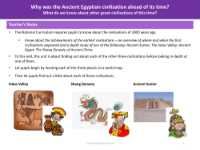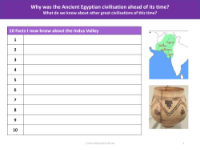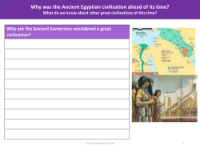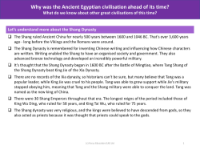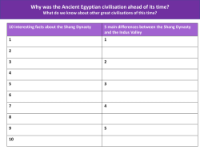What do we know about other great civilisations of this time? - Presentation
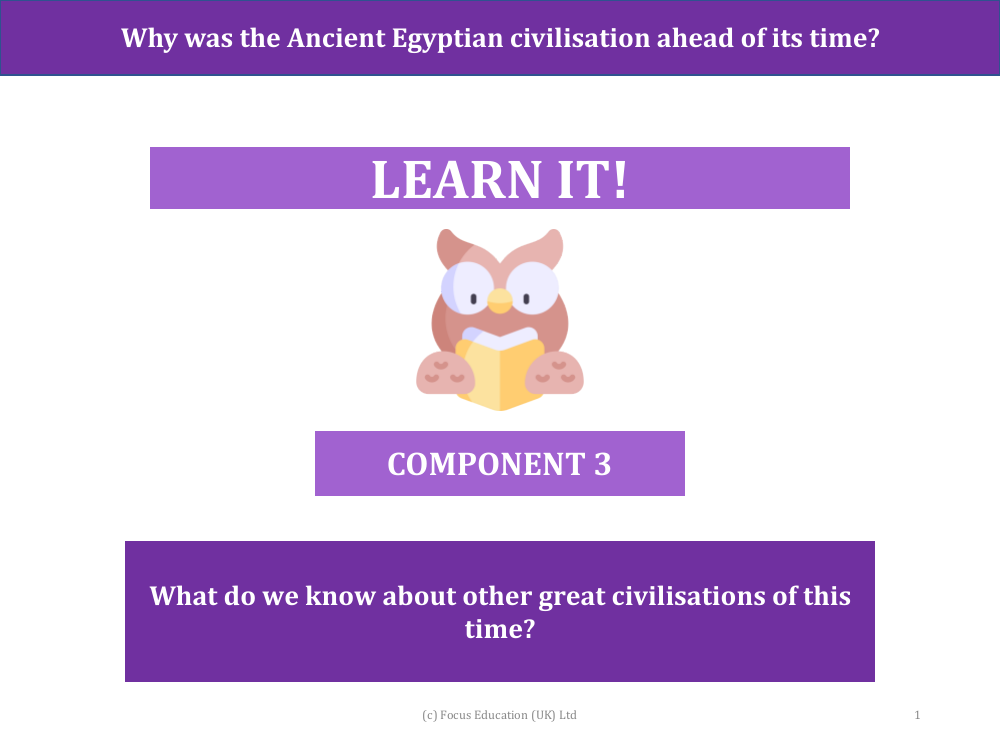
History Resource Description
The National Curriculum in the UK guides students to explore the great civilisations from 3000 years ago, including Ancient Sumer, the Indus Valley, Ancient Egypt, and the Shang Dynasty of Ancient China. This educational journey begins with pupils locating each civilisation on a world map and discovering key facts about them. For instance, the Indus Valley civilisation, which flourished around 5,000 years ago in present-day Pakistan and Northern India, is noted for its advanced urban planning, including sophisticated sewage systems and impressive buildings. Students learn about the Indus Valley's unique features through vocabulary such as 'citadel', 'querns', and 'ingots', and explore the region's history, including the significant archaeological site of Harappa.
Similarly, the Ancient Sumer civilisation is recognised as the first urban society in Mesopotamia, located in what is now southern Iraq. It's acclaimed for pioneering the cuneiform script and the world's earliest known law code. The Sumerians were also adept in animal domestication and had a number system based on 60. Moving to the Shang Dynasty, which ruled Ancient China for nearly 500 years, students learn about its contributions to Chinese writing, bronze technology, and military prowess. The Shang Dynasty is also remembered for its religious significance, with kings who were believed to be descended from gods. These teaching materials encourage students to engage with multimedia resources to further their understanding of these ancient civilisations and their lasting legacies.
